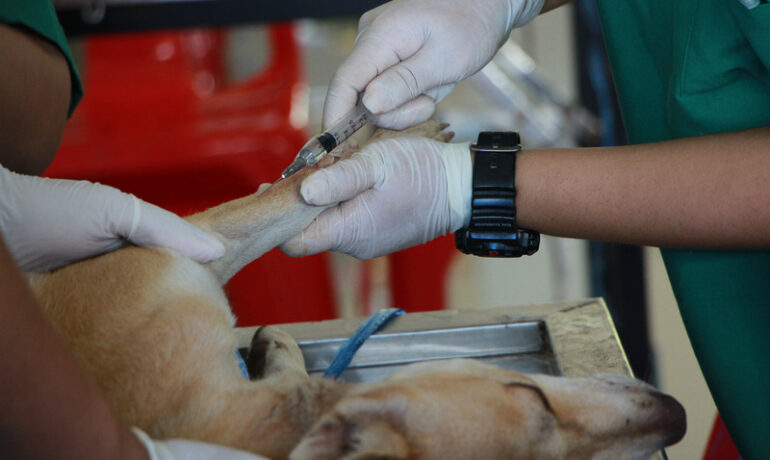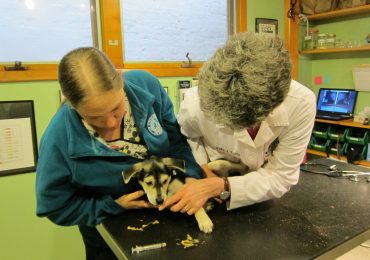Low-Stress Blood draw using EMLA cream
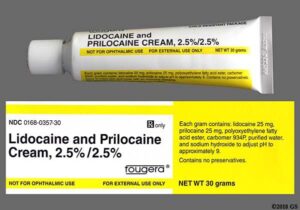
The use of lidocaine topical cream has become recognized as a way to decrease patient discomfort and stress for IV catheterization. One published study from the Journal of Feline Medicine and surgery journal article here looked at applying lidocaine 2.5%-prilocaine 2.5% combination cream 30 minutes prior to the jugular blood draw. This is also called EMLA cream. What I appreciate about this study, is stress behavior was charted for handling in addition to the act of venipuncture. There was a significant decrease in feline stress and pain response using the lidocaine-prilocaine cream. This cream is gaining popularity for IV catheter placement, and other blood draw sites in both dogs and cats.
I have used this product in practice for many years and presented case studies using this at the Veterinary Behavior Symposium 2013. I found that this product decreased pain for many procedures including examination of inflamed ears, anal gland expression, and broken toenails that needed to be clipped. As my staff would use this product, we saw a decrease in both stress and aggression in our patients. I also dispensed this product for home care, which greatly decreased pet stress and owner directed aggression. Download the abstract of my presentation here.
As I grew in experience using the topical lidocaine-prilocaine combination cream, I could see other topical anesthetic products that would facilitate exams, when it was difficult to use a cream. As I present these products, always keep in mind the preparation of the product, appropriate use of the preparation, and the difference in product absorption, rate, and duration of action. Here are few products I also used:
EMLA cream and more
Solarcaine sunburn spray is a .5% lidocaine spray is a hands-off way to apply fast-acting pain relief to skin away from the face or open wounds. One of my technicians suggested trying this for broken nails and severe anal closed anal irritation to prepare for the lidocaine-prilocaine cream application. It was amazing how fast this product decreased the immediate topical pain, and decreased stress for the cream application. Frankly, this product prevented a lot of bites! We did not use this as a replacement for the lidocaine cream but as a preparation step when we could see reaching to touch an area was increasing stress significantly, and oral or injectable pain relief would take longer than our appointment time would allow. The smell is a bit strong – so we only used this in dogs as a spray. We did not use this near the face or open wounds without full shielding as it has propellants.
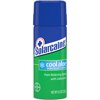
Practice tip: Spray Solarcaine on broken nails, aimed away from the animal’s face or shield. Wait 3 minutes then swab a large pea-sized lump of EMLA cream onto the nail and nail bed using a q tip or icing spatula to minimize touch. Wait another 10 minutes then using high valued rewards, through a muzzle ( safety! It may still be slightly painful) clip the nail and treat as you would.
Lidocaine gel mixed with Bupivicane – I started using this combination during dental cleaning and post-extraction, especially when there was generalized gingivitis. Swabbing the mouth with this in-office preparation improved patient recovery decreased drooling and I saw less deep pain reaction to intraoral nerve block injections. Mixing 1 ml of injectable bupivacaine into 15 grams ( 1/2 tube) of lidocaine gel created this combination product. When we were not able to get EMLA cream, this combination product also worked quicker than the 4% lidocaine only cream.
Practice tip: Use a 20-dram pharmacy vial for mixing and storing the combination gel. Squeeze half the tube of the 4% lidocaine gel into the vial. Draw up 1 ml injectable .5% and mix into the gel. This will store up to 30 days.
Oragel teething gel:
I am no longer in general practice but recently I needed to provide a housecall exam for an anxious cat. This was an urgent call, and I found the cost of the EMLA cream through my human pharmacy was over $50.00. Through my distributor, it would have cost $6.75 but I needed something over the counter that would work quickly that day. Oragel Mouth sore gel worked great. This 20% Benzocaine with .1% zinc oxide and Benzalkonium chloride .02% works as a topical anesthetic. I used this product for a jugular blood draw, and over the femoral vein. A 1/4 inch ribbon wiped over the shaved skin, provided excellent analgesia in 3 minutes. I applied the product and waited for the 3 minutes, then wiped with Witch Hazel for vasodilation and cleaning. If you are just starting out using topical products, or are in a pinch grab a tube of oragel.
Practice tip: Use the oragel for small areas, as the tubes are small( 11 grams compared to 60 grams in EMLA) and the gel is thick.
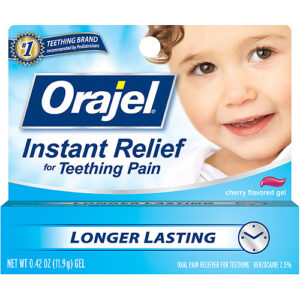
Safe
Using topical anesthetics provides staff safety by decreasing patient aggression. The other side of safety is product toxicity. I have read on veterinary forums, some practitioners worried that cats are too sensitive to Lidocaine toxicity so this product should be avoided. A reference for feline lidocaine toxicity determined 5 mg/kg was a toxic blood level of lidocaine. Lidocaine Prilocaine cream reaches a blood level of .05mcg when 60 grams are applied over 400 cm squared human skin. This equals .0005mg total when an entire tube of EMLA cream is applied. Typically 1 ml of EMLA is spread over the skin for jugular or IV catheter placement. 1 ml = 2 grams of the product. Blood absorption of Lidocaine-prilocaine for an IV placement would be 1/30th of .0005mg or .000017mg or .0003% of a toxic dose. This is negligible. Also the Lidocaine creams taste bitter. When cats lick at the cream, they will drool, so oral ingestion is extremely rare.
Keep care safe and low-stress
I hope you are using EMLA cream and other products in practice and for home care. The benefits far outweigh the risks and costs. As the discipline of humane handling, cooperative care, and low-stress veterinary care grows, there will be increased offerings of products and use of these products. I would love to hear how you use these products in your work.
Please comment below or contact me.
Thanks
Sally J Foote DVM, CABC-IAABC, LSHC-S
Better Bond – Better Behavior
